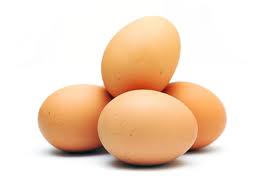Ground meat treats: Zucchini and onion meatloaf

A cousin of the meatball ( ), the meatloaf is a traditional German dish. The recipe below is for a meal that feeds 4-8 people. The ground beef used has little fat, and thus a relatively low omega-6 content. Most of the fat comes from the 1 lb of ground grass-fed lamb in the recipe, which has a higher omega-3 to omega-6 ratio than the regular (i.e., non-grass-fed) ground beef. The egg acts as a binder. Leave the potato out if you want to decrease the carbohydrate content; it does not add much (nutrient numbers are provided at the end of the post). - Prepare some dry seasoning powder by mixing salt, parsley flakes, garlic powder, chili powder, and a small amount of cayenne pepper. - Grate one zucchini squash and one peeled potato. Cut half an onion into small pieces of similar size. - Mix 2 lb of very lean ground beef (96/4) with 1 lb of ground grass-fed lamb. - Add the dry seasoning, zucchini, potato, onion and a whole egg to the ground meat mix. - Vigorously mix by hand until you get a
